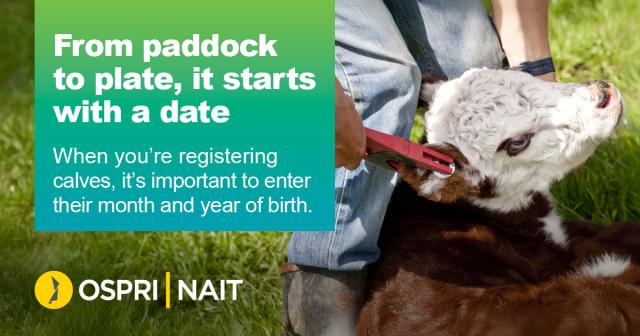At the foot of Canterbury’s Main Divide sits Mt Algidus Station, where Christine Angland and her husband Peter have been farming for the past 13 years. Their high-country operation spans 4,000 hectares of effective land, calving 1,300 cows annually and wintering around 2,600 cattle and 4,600 sheep.

Christine is hands-on in the day-to-day running of the station and also chairs OSPRI’s Canterbury Farmer Committee. She’s a strong advocate for the NAIT system and the role farmers play in strengthening New Zealand’s biosecurity.
“Data is key,” Christine says. “It’s what we rely on when managing disease risks and responding to outbreaks.”
Recording the date of birth (DOB) for calves is one of the simplest ways farmers can support NAIT lifetime traceability - a system that tracks animals from birth to slaughter. Christine uses the start of the second calving cycle as an average DOB when registering calves. “It’s often the missing piece, along with place of birth, and it’s essential for traceability.”
On-farm, Christine and Peter use visual tags alongside NAIT tags for all their beef, breeding, and finishing stock. “Different colours help us sort animals by year, check if they’ve calved, or identify which ones need mouthing,” she explains. “It also makes replacing lost EID tags easier - we can link the new tag without creating a whole new record.”
Her advice to other farmers? “Keep it simple and easy to remember - a month is good enough. Recording DOB helps meet traceability requirements and supports access to premium markets.”
From paddock to plate, it starts with a date
When you're registering calves, it's important to enter their month and year of birth in NAIT. If you’re unsure of the actual day, put the 1st of the month – this still meets your NAIT obligations.
Whether it’s your breeding stock or finishing stock, having birth information logged in the system puts our industry in a stronger position.